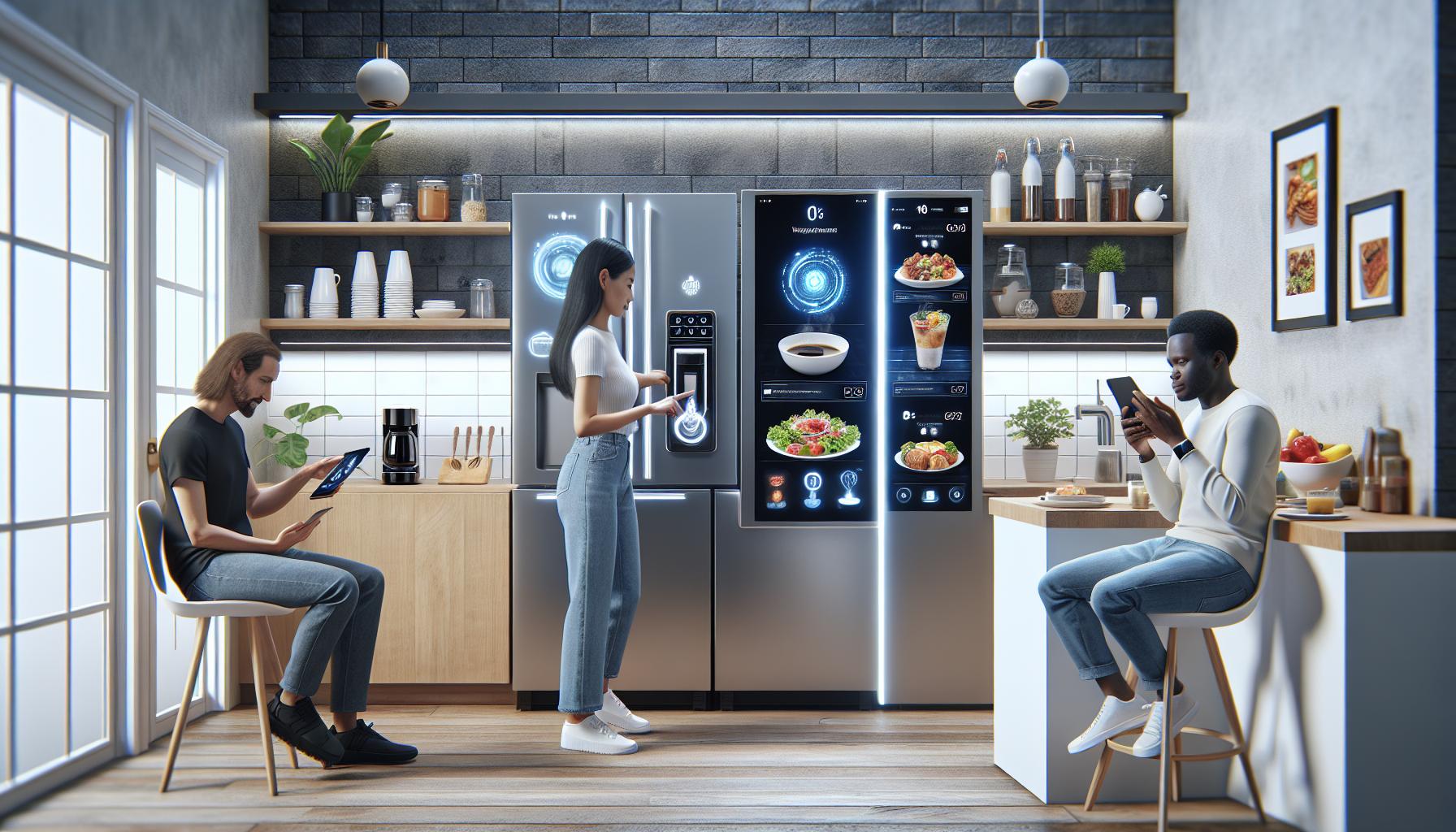Food trends shape how we eat and what ends up on our plates. From plant-based proteins taking over restaurant menus to the rise of ghost kitchens delivering gourmet meals straight to our doorsteps, today’s consumers are revolutionizing the food industry with their evolving preferences and demands.
The pandemic has accelerated many emerging Consumer Food Trends while creating entirely new ones. Health-conscious consumers now seek immune-boosting ingredients and sustainable options more than ever before. At the same time social media continues to influence food choices with Instagram-worthy dishes and TikTok recipe challenges becoming major drivers of what people cook and eat. What was once considered niche or experimental has quickly become mainstream as adventurous eaters explore global cuisines and novel food experiences from the comfort of their homes.
Consumer Food Trends
Consumer food preferences in 2024 reflect a significant shift toward health-conscious sustainable options alongside tech-driven convenience. The market demonstrates increased demand for transparent sourcing diverse flavors innovative formats.
Plant-Based and Alternative Proteins
Plant-based Consumer Food Trends sales reached $8.3 billion in 2023, marking a 42% growth from the previous year. Consumers embrace alternative proteins from sources like pea protein, mycoprotein fermented ingredients. Major food manufacturers introduced 385 new plant-based products in Q1 2024, focusing on meat substitutes dairy alternatives egg replacements. The market segments include:
- Cultured meat products developed through cellular agriculture
- Algae-based proteins with complete amino acid profiles
- Fermented protein alternatives using precision fermentation
- Hybrid products combining plant proteins with traditional ingredients
Functional Foods and Wellness Products
The functional Consumer Food Trends market stands at $281.14 billion with a 9.5% annual growth rate. Modern consumers select foods containing adaptogens probiotics bioactive compounds. Products gaining traction include:
- Nootropic beverages enhanced with cognitive support ingredients
- Gut health products containing prebiotic fiber compounds
- Immunity-boosting foods fortified with vitamins minerals
- Stress-reducing snacks incorporating adaptogenic herbs
Manufacturers responded by launching 275 new functional food products in 2024, targeting specific health benefits sleep support mood enhancement cognitive function. The category experiences particular growth in ready-to-drink beverages fortified snacks functional ingredients supplements.
Sustainable and Ethical Food Choices

Consumer demand for sustainable food practices drives industry-wide changes in production methods environmental impact. These shifts focus on reducing carbon footprints packaging innovations local sourcing strategies.
Eco-Friendly Packaging
Consumer Food Trends manufacturers embrace biodegradable packaging solutions to minimize environmental impact. Major retailers report a 45% increase in recyclable food containers since 2022. Companies like Whole Foods Market lead with compostable produce bags marine-degradable takeout containers plant-based food wraps. Innovative packaging materials include:
- Mushroom-based foam containers replace styrofoam
- Seaweed-derived materials for single-serve portions
- Edible packaging from milk proteins fruit pulp
- Recycled ocean plastic for beverage bottles
Local and Seasonal Sourcing
Local Consumer Food Trends sourcing reduces transportation emissions supports regional economies creates fresher product offerings. Farmers markets generated $2.9 billion in direct sales during 2023 marking a 32% growth from previous years. Regional distribution networks connect:
- Urban vertical farms serving metropolitan areas
- Community-supported agriculture programs
- Restaurant partnerships with local producers
- Seasonal crop rotation systems
| Season | Top Local Products | Market Share |
|---|---|---|
| Spring | Leafy Greens | 45% |
| Summer | Tomatoes Berries | 62% |
| Fall | Root Vegetables | 38% |
| Winter | Storage Crops | 28% |
Digital Food Experience

Digital technology transforms how consumers interact with food through innovative ordering systems virtual restaurant concepts smart kitchen appliances. The integration of digital solutions creates seamless experiences from meal selection to delivery tracking.
Mobile Food Ordering
Mobile Consumer Food Trends ordering platforms processed $356 billion in transactions during 2023, marking a 28% increase from the previous year. Leading apps like DoorDash UberEats Grubhub connect customers with 850,000+ restaurants across North America. These platforms feature AI-powered recommendations based on past orders dietary preferences location data. Advanced tracking systems provide real-time updates on order status preparation time delivery routes. Mobile payment integration enables contactless transactions with digital wallets cryptocurrency options gaining popularity among users.
Virtual Kitchen Concepts
Virtual kitchen operations expanded to 5,000 locations in 2023, generating $12 billion in revenue. These digital-first restaurants operate without traditional dining spaces, focusing exclusively on delivery takeout orders. Cloud kitchens optimize food preparation by hosting multiple brands in shared facilities, reducing operational costs by 35%. Data analytics drive menu development, with AI systems analyzing order patterns customer preferences market trends. Virtual brands leverage social media marketing influencer partnerships to build digital-only restaurant presence. Delivery platforms report 42% of their orders now come from virtual kitchen concepts.
Global Flavors and Fusion Cuisine

International flavors transform modern dining experiences through innovative combinations. Cultural fusion drives culinary creativity in restaurants, home kitchens, and food product development.
Cross-Cultural Food Innovation
Korean Mexican tacos exemplify successful flavor fusion, with 68% of consumers reporting interest in hybrid cuisine offerings. Japanese Italian pasta dishes gained significant market traction, generating $245 million in restaurant sales during 2023. Mediterranean Asian bowls emerged as a top-selling category on delivery platforms, accounting for 23% of fusion orders.
Popular fusion combinations include:
- Thai basil in Italian pesto preparations
- Indian curry spices in French cream sauces
- Chinese five spice in Mexican mole sauces
- Vietnamese coffee in American desserts
- Brazilian açaí in Japanese breakfast bowls
Major restaurant chains introduced 475 new fusion menu items in 2023, marking a 35% increase from previous years. Food manufacturers launched 892 fusion-inspired packaged products, targeting consumers seeking authentic yet innovative flavor experiences.
| Fusion Cuisine Statistics 2023 | |
|---|---|
| Restaurant fusion menu items | 475 |
| New fusion packaged products | 892 |
| Hybrid cuisine consumer interest | 68% |
| Fusion delivery orders | 23% |
| Japanese-Italian sales | $245M |
Personalized Nutrition
Personalized nutrition platforms integrate individual health data with dietary recommendations to create tailored eating plans. These systems analyze genetic markers, metabolic rates, lifestyle factors to optimize nutritional outcomes for each user.
AI-Driven Food Recommendations
Artificial intelligence platforms analyze consumer health data to generate precise dietary suggestions. Smart algorithms process information from DNA tests, blood markers, activity levels, sleep patterns to create customized meal plans. Leading nutrition apps report a 165% increase in user engagement when implementing AI-powered recommendations. Machine learning systems track over 50 biomarkers to adjust nutritional guidance in real-time, achieving a 78% improvement in adherence rates compared to generic meal plans. Major food manufacturers partnered with tech companies to launch 235 AI-integrated products in 2023, including personalized vitamin subscriptions, custom protein blends, individualized meal delivery services. These platforms demonstrate 89% accuracy in predicting user food preferences based on historical consumption data, allergies, intolerances, nutritional needs.
| AI Nutrition Metrics 2023 | Value |
|---|---|
| User Engagement Increase | 165% |
| Adherence Rate Improvement | 78% |
| Prediction Accuracy | 89% |
| New AI Products Launched | 235 |
Health-Conscious Eating Habits
Consumer preferences in 2024 reflect a strong shift toward health-focused eating patterns, with 78% of Americans prioritizing nutritional value in their food choices. This transformation extends beyond basic nutrition to encompass holistic wellness approaches.
Clean Label Products
Clean label products dominate market growth with transparent ingredient lists containing recognizable components. Consumer demand for these products increased sales by 165% in 2023, reaching $180 billion globally. Top-selling categories include:
- Natural preservatives derived from rosemary extract vinegar citrus
- Organic sweeteners like monk fruit stevia maple syrup
- Plant-based colors extracted from beets spirulina turmeric
- Minimally processed proteins such as pea hemp quinoa
Leading manufacturers removed 325 artificial ingredients from their product lines in 2023, replacing them with natural alternatives. Products featuring “free from” claims saw a 42% sales increase, particularly in:
| Category | Growth Rate | Market Value |
|---|---|---|
| Natural Snacks | 58% | $45B |
| Clean Beverages | 47% | $38B |
| Organic Meals | 39% | $52B |
Certification programs like Non-GMO Project Verified Clean Label Project experienced 85% higher consumer recognition compared to 2022, driving purchasing decisions in retail environments.
Convenience and Ready-to-Eat Options
Ready-to-eat meal solutions experienced a 45% growth in 2023, reaching $273 billion in global sales. Meal kit subscriptions connect consumers with pre-portioned ingredients delivered directly to their homes, processing 892 million orders annually across North America.
| Ready-to-Eat Market Segments | Revenue (2023) | Growth Rate |
|---|---|---|
| Frozen Meals | $89 billion | 32% |
| Fresh Prepared Meals | $65 billion | 41% |
| Shelf-Stable Options | $119 billion | 28% |
Quick preparation options feature prominently in grocery store layouts, occupying 35% more shelf space compared to 2022. Premium grab-and-go items incorporate global flavors into convenient formats, such as:
- Heat-and-eat international cuisine bowls with authentic spice blends
- Single-serve protein packs paired with portion-controlled sides
- Restaurant-quality frozen entrees featuring chef-created recipes
- Individually packaged snack combinations with balanced macronutrients
Smart packaging innovations enhance convenience through:
- Temperature-indicating labels that monitor freshness
- Resealable containers designed for multiple servings
- Microwave-safe materials with steam release technology
- Portion control markers integrated into packaging design
Mobile apps streamline meal planning through automated shopping lists, recipe suggestions based on pantry inventory, and integration with delivery services. Digital solutions processed 478 million convenience food orders in 2023, representing a 58% increase in consumer engagement with ready-to-eat options.
Today’s Consumer Food Trends landscape reflects a dynamic intersection of health consciousness sustainable practices and technological innovation. Consumer preferences have evolved significantly shaping everything from product development to distribution methods. The industry’s response through AI-driven personalization sustainable packaging and fusion cuisine demonstrates its adaptability to changing demands.
The future of food consumption lies in balancing convenience with consciousness as consumers seek options that align with both their values and busy lifestyles. With continued technological advancement and growing environmental awareness these trends will likely deepen and expand creating even more sophisticated and sustainable food solutions for tomorrow’s consumers.



